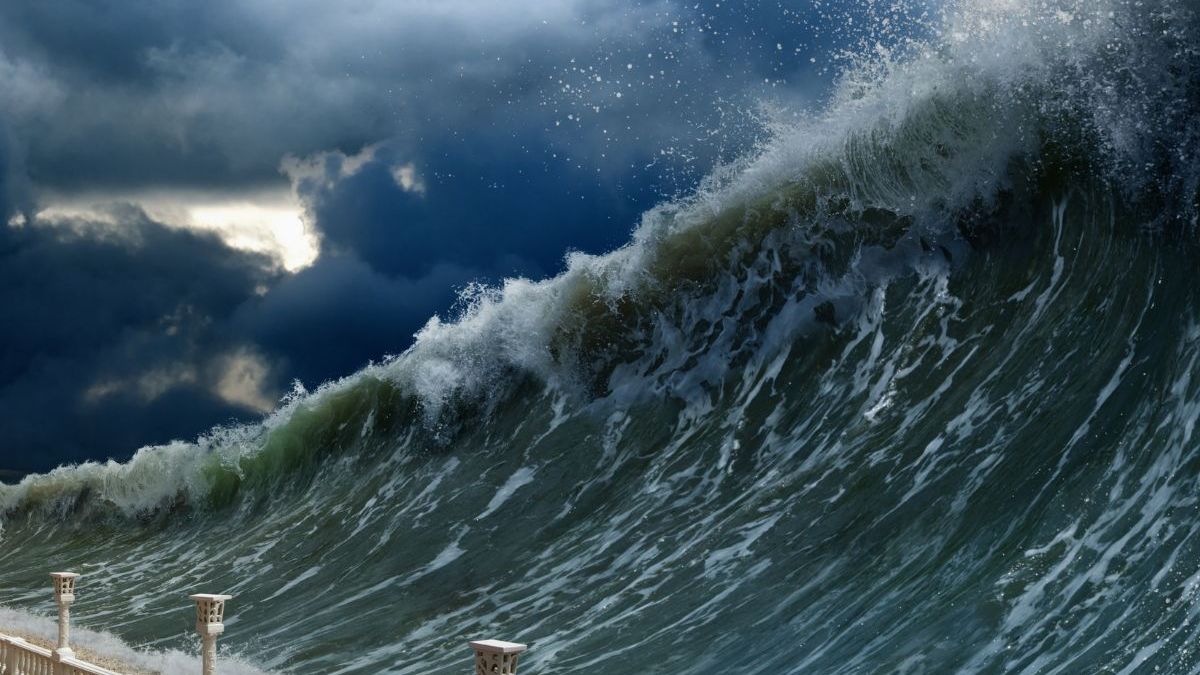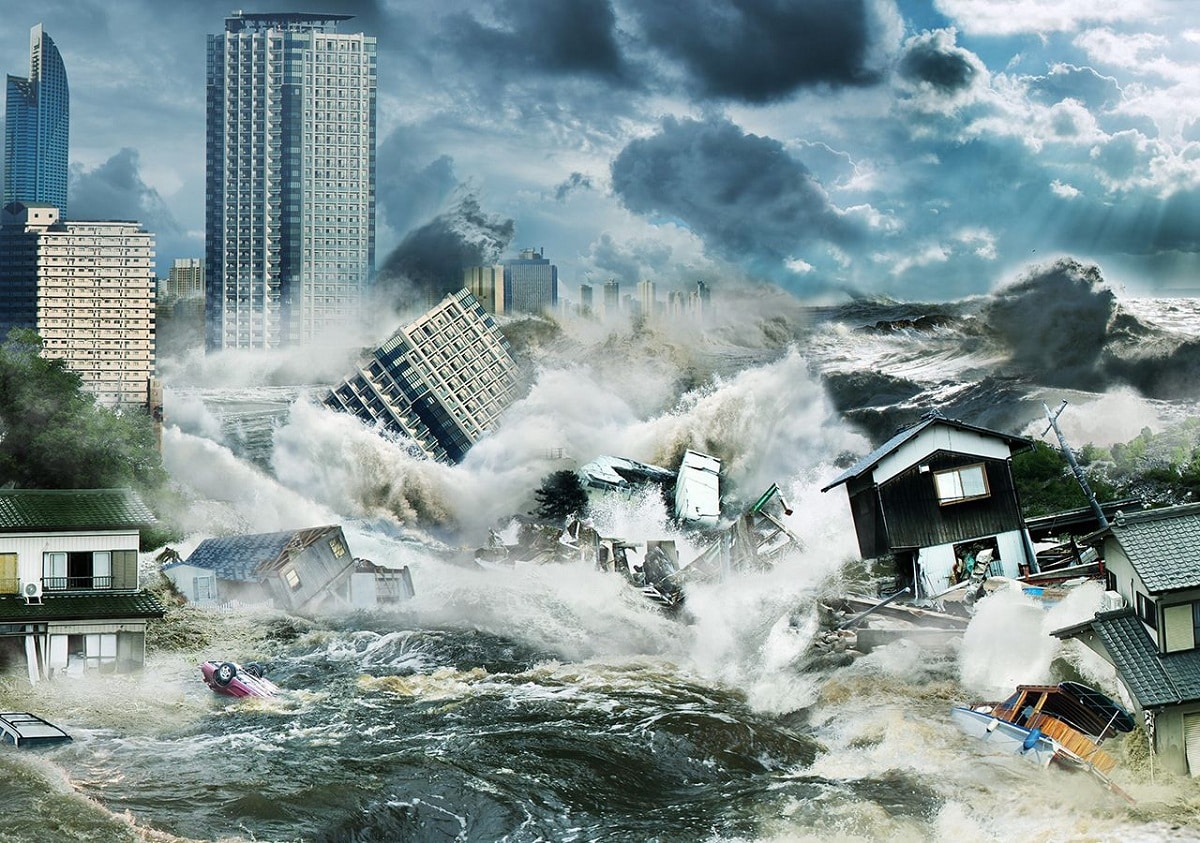
Un megatsunami it is a very large wave created by a large and sudden movement of material into a body of water. Scientists are afraid of the occurrence of this type of phenomenon due to the great capacity for destruction of coastal areas.
For this reason, we are going to dedicate this article to telling you what a megatsunami is, what its characteristics, consequences and probability of occurrence are.
What is a megatsunami

Megatsunamis have completely different characteristics than other more common types of tsunamis. Most traditional tsunamis are caused by seafloor tectonic activity (movement of the earth's plates) and thus occur along plate boundaries and are the result of earthquakes and the rise or lowering of the seabed, which causes the displacement of water.
Common tsunamis exhibit shallow waves at sea, and as the seabed becomes shallower and closer to land, the water begins to "pool" to a wave height of up to about 10 meters. Instead, giant tsunamis occur when a large amount of material suddenly falls into or near water (for example, from a meteorite impact or volcanic activity).
They can have very large initial wave heights, ranging from hundreds of meters and possibly even thousands of meters, far exceeding any ordinary tsunami. These rogue wave heights occur when the water is "splashed" and splashed by impact or displacement.
Examples of modern mega tsunamis include those associated with the 1883 Krakatoa eruption (volcanic eruption), the 1958 Lituya Bay mega tsunami (debris flow into the bay), and waves caused by the dam landslide. de Ouyote (human activity destabilized both sides of the sea level (valley). Prehistoric examples include the Storegga landslide (landslide) and the Chicxulub, Chesapeake Bay, and Eltanin meteorite impacts.
How does a megatsunami happen?

A giant tsunami is a tsunami with an initial amplitude (height) measured in tens, hundreds, or even thousands of meters. Giant tsunamis are a different class of events than traditional tsunamis and are caused by different mechanisms.
Normal tsunamis are the result of movement of the sea floor due to plate tectonics.. Strong earthquakes can cause the seafloor to move tens of meters, which in turn can move the water column above, causing tsunamis to form. Traditional tsunamis have very small wave heights at sea and generally go unnoticed at sea, with only a slight swelling on the order of 30 cm (12 in) above the normal sea surface.
in deep water, a tsunami can go through the bottom of a ship without the crew noticing. When it reaches land, the wave height of a traditional tsunami increases sharply as the seafloor tilts up and the bottom of the wave pushes the water column up. Traditional tsunamis, even those associated with the strongest slip earthquakes, typically do not reach heights greater than 30 m.
In contrast, giant tsunamis are caused by massive landslides and other impact events that affect large amounts of water. This also includes the case of meteors hitting the ocean. Undersea earthquakes or volcanic eruptions don't usually produce such large tsunamis, but earthquake-induced landslides near bodies of water do because they cause massive displacement. If a landslide or shock occurs in a limited body of water, as happened at Vajont Dam (1963) and Lituya Bay (1958), the water may not disperse and one or more waves may be too big.
One way to visualize the difference is that ordinary tsunamis are caused by changes in the seabed., such as pushing the bottom of a large bucket of water to the point of overflowing, causing the water to "slip" on both sides. In this analogy, a giant tsunami is more like dropping a large rock into one end of the bathtub from quite a high point, causing the water to splash and overflow at the other end.
Giant tsunamis are sometimes referred to as two heights: the height of the wave itself (in open water) and the height of its rise when it reaches land, which can be several times higher depending on the location.
Consequences and danger

In a study presented by the Tsunami Society in 1999, the mechanisms that caused the giant tsunami for the Litua Bay event were analyzed. The model was considerably developed and modified in a second study in 2010.
Although the earthquake that triggered the giant tsunami is believed to have been highly dynamic, it may not be the only contributor based on measured wave heights. Neither the drainage of the lake, the landslides, nor the earthquake itself were powerful enough to cause the observed huge tsunami, although these may have been contributing factors.
Instead, giant tsunamis are caused by a combination of events in rapid succession. The main event came in the form of a massive abrupt shock impact, when some 40 million cubic yards of rock hundreds of meters above the bay were fractured by the earthquake and "almost entirely" dislodged from the slope. The rockfall also caused air to be "entrained" due to viscous effects, which increased the amount of displacement and further affected the sediments at the bottom of the bay, creating a large crater. The study concluded:
- The 524-foot (1,720-meter) wave at the head of the bay on July 9, 1958, and subsequent waves along the main body of Lituya Bay, were mainly caused by a massive rock slide. Rocks in Gilbert Bay at the head of Lituya Bay, caused by dynamic ground movement along the Fairweather Fault.
I hope that with this information you can learn more about the megatsunami and its characteristics.
Interesting as always this topic, since I live in the coastal area in my capacity as an educator I will give guidance to the community... Greetings.